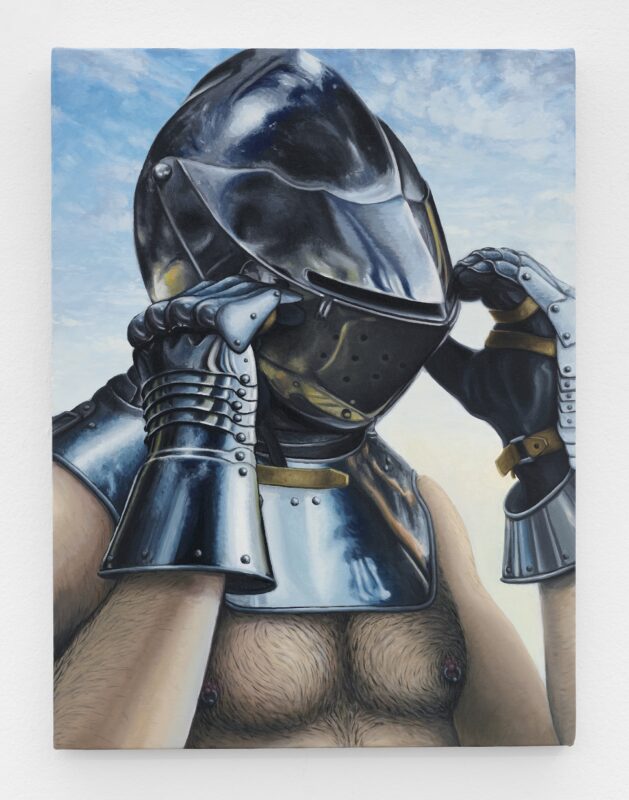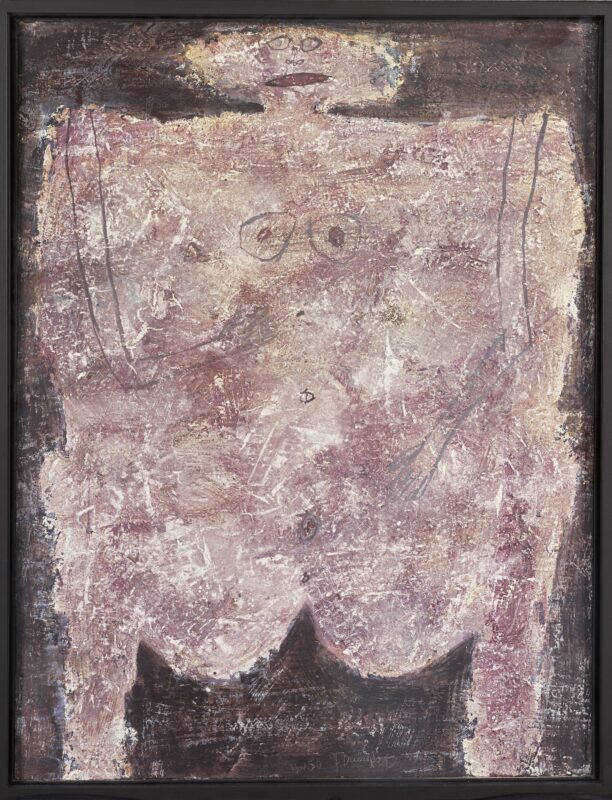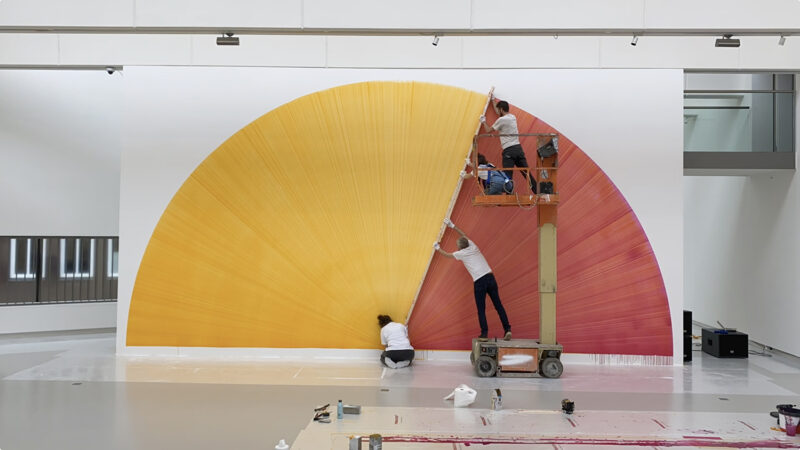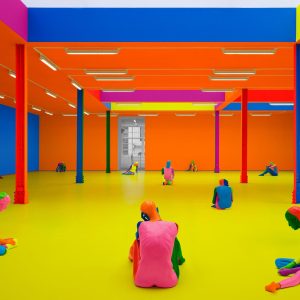Brooklyn-based art writer Vittoria Benzine approaches life like a fourth grade science project, with a particular affinity for control variables. This year’s summertime group shows have overtaken the globe’s northern hemisphere, including New York. A number on view highlight individual gallery histories (see, Hollis Taggart) or the progression of cultural movements (see, Sikkema Jenkins) — but the rest, by virtue of being group shows, center on a concept. Summertime offers a litmus look at what ideas are driving the art world. The format is the control variable. Current fixations appear to blur the dichotomy between material and ephemeral through dreams, nostalgia, communication, and, for the AI hyper-tech era, explorations into what it means to be a body, be a human, and if those two are the same thing.
Benzine hasn’t had a proper summer in the city since 2020. She rejoined the sweltering streets to see what’s on view, then chose FAD’s five favorite group shows from Manhattan — an especially strenuous selection process this time around. Each one offers a concise review to help decide if it’s for you. If you want a deep dive, we’ve got thoughtful interviews from curators behind the group shows on view at Below Grand downtown and Ceysson & Bénétière uptown.
“Title IX” @ The Hole
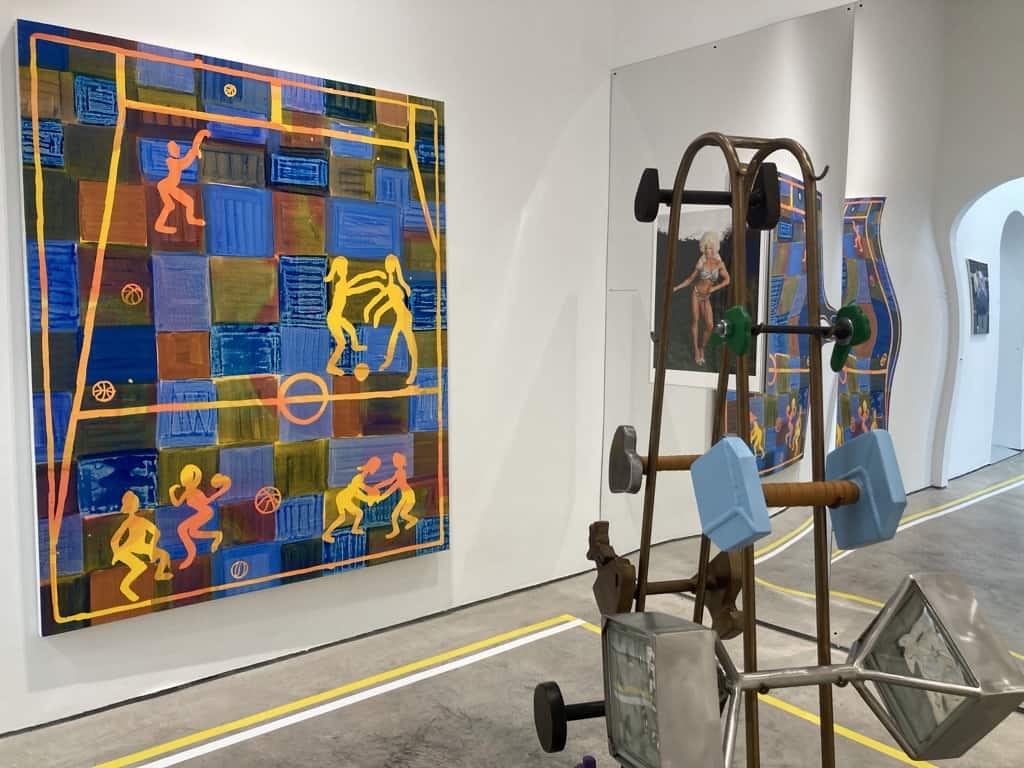
The premise? Ballsy. Charlotte Grüssing’s two-part endeavor takes on intersectionality within gender identity and sports with works from thirty cutting edge contemporary artists like Jake Troyli and Ricardo Partida, all exploring athleticism with a tongue in cheek, political bent. Title IX outlaws a spectrum of gender discrimination in education. “When signed into law in 1972 less than 300,000 girls nationwide played high school sports; that number is now more than three million,” the gallery’s release says. Their Bowery location plays with painting and design — I mistook Noel W Anderson’s massive cotton tapestry for oil at first, when it’s actually fabric with laser cut basketball leather affixed to it. The theme is beads and bright colors in TriBeCa, where the floors are painted like a basketball court too. A sherbet sunset hair bead curtain by Felandus Thames accompanies the back room entrance, where footage plays from an interview following the 1999 incident where Venus Williams lost a point because beads from her hair scattered during a serve. Her visage is obscured by the same textures that give Quinci Baker’s vibrant inkjet collages of Venus Williams coated with melted plastic on the surrounding walls their supernal glimmer, the shape of hair beads not fully melted in places. Through August 27
“Ugly Painting” @ Nahmad Contemporary
In 1951, Solomon Asch conducted a now-famous experiment where unwitting participants answered questions about text on a wall while disguised imposters offered obviously incorrect responses. Three quarters of participants went along with the falsities, igniting research into conformity. Scientists traced rebellion to the lateral orbitofrontal cortex last decade. “It’s better if more people are conformists than rebels,” one researcher said, “but you need a few rebels otherwise there would be no progress.” This show by Eleanor Cayre and Dean Kissick sticks a middle finger at society’s load bearing love for beauty. Even Connor Marie’s portrait of a sublime model evoking Gemma Ward is mirrored by a pig, ripples mangling both reflections in a puddle below. But beauty abounds. Takashi Murakami’s subtly embossed “Homage to Francis Bacon” showed me an otherworldly side of the artist, and that’s not the only art historical reference. “Life can be dirty and messy,” reads the curators’ release, a manifesto that also mentions a new era in the art of figuration, “and that is part of its appeal.” Through August 26
“Shrines” @ Silverlens
Arrangements teeming with tangible life greet those entering “Shrines” at Silverlens New York’s spacious Chelsea gallery, courtesy of curator Isa Lorenzo. Whether sculpture, painting, mixed media assemblage or detailed embroidery, each object by this array of artists all based or born in the Philippines individually knows how to fill up a room — which makes sense when you think about what a shrine’s meant to do. What’s being conjured, though, is the crux of this exhibition, enriched by its geographic focus. Works from sixteen artists made as early as the 1980s all the way through this year commune in a shared search for materialization of the spiritual, even identity. They’re organized into four sections — History and Identity, Identity, The Body, Vessels — which progress like an earth toned sermon with a splash of neon through three rooms. Through August 19
“Either harmony or life in oblong” @ Theta, NYC
I stumbled into Theta in TriBeCa — somewhat literally, since it’s one the coolest gallery thresholds I’ve crossed yet — on a Saturday where they weren’t’ supposed to be open. Fortunately, Brooklyn born and L.A. based artist and curator Omari Douglin was on site showing friends and family around. His press release is written like poetry, harmonizing the meditative, abstract artworks by five bicoastal multimedia artists and sculptors all situated within the show’s trendy propagator’s circle. “Are you living with nature or against it? / Have you boxed passion in the oblong?” Douglin’s writing asks viewers at the end. An abstract sculptural arrangement on the floor mimics ancient healing rituals, though it’s made of paper plates and Amazon bags, one of many opportunities available for gentle reflection nestled underground here,while self taught classical and romantic composer SIGOURNEY scores the scene. Through July 29
“Synthetic Bodies” @ Lyles & King
This intergenerational show of 20 artists including Paul Thek through Rachel Rossin explores the long legacy of humanity’s collective grappling with whether a body really sets our species apart — especially since we’re already living in the “age of the Cyborg,” where artificial medical apparatuses are a natural part of healthcare, and virtual spaces augment the reach of each consciousness. Futuristic sculpture, video, photography and intensely mixed-media painting all join forces exploring this tale across time. Some works in the show date back to the 1960s, but most were made these past few years, projecting new possibilities not only in artmaking, but the body itself. “At this critical junction in human history, one wonders – can the human body evolve to solve problems we have created?” asks a David Cronenberg quote at the release’s start. “Can the human body evolve a process to digest plastics and artificial materials not only as part of a solution to the climate crisis, but also, to grow, thrive, and survive?” Through August 12
